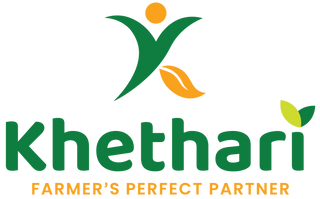
PAPAYA CULTURAL PRACTICES
Scientific name: carica papaya
Common Telugu name: Boppayi
Introduction:
Papaya, papaw or papita (Carica papaya L.) originated from tropical America, has become a popular fruit due to its fast growth, high yield, long fruiting period and high nutrient value as well. In addition it has been use as vegetable, fruit processing, and papain production at immature stage. It can be a highly profitable crop now.
Soil and climate:
It is a tropical fruit and grows well in regions where summer temperature ranges from 35°C - 38°C. Tolerates frost and comes up to an elevation of 1200 m above mean sea level. Well drained soils of uniform texture are highly preferable to avoid the collar rot disease.
Land preparation:
Field should be ploughed thoroughly and pits of size 60 cu.cm should be dug out. After weathering, pits should be filled with top dug out soil along with 10kg FYM + 1kg Neem cake + 5 kg Rock phosphate + 1.5 kg MOP + 20-25 g of Trichoderma per pit.
Sowing:
Papaya is propagated normally through seeds.
Seed rate: 500g/ha
Seeds should be treated with PGPR before sowing
Nursery bags should be filled with garden soil, FYM and sand in 1:1:1 ratio. Addition of Trichoderma @2-3 g/bag will be beneficial.
3-4 seeds should be sown per bag for dioecious varieties
2-3 seeds per bag for gynodioecious varieties
Regular watering is essential.
Planting:
Normal spacing: 1.8 x 1.8 m
High density planting1.3m x1.3m
For dwarf variety: 1.2 x 1.2 mSeedlings of 35-40 days age are transplanted into pits. Proper staking with bamboo poles is essential to avoid lodging. Mulching of basin and thatching with coconut leaves are essential practices to be followed.
Varities:
CO 1, CO 2, CO 3, CO 4, CO 5, CO 6, CO 7, CO 8, Coorg Honey dew and Surya.
CO 3, CO 7 and Surya are gynodioecious (bisexual + female) types highly suitable for table purpose and CO 2, CO 5 and CO 6 are dual-purpose varieties for table and papain production.
Nutrient Management:
Apply FYM 10 Kg/plant as basal and 50 g in each of N, P and K per plant at bi-monthly intervals from the third month of planting after removing unwanted sex forms. Apply 20 g in each of Azospirillum and Phosphobacterium at planting again six months after planting.
Fertigation technique:
Apply 10 litres of water per day + 13.5 g urea and 10.5 g muriate of potash/ week through drip irrigation and soil application of super phosphate 300g per plant at bimonthly intervals starting from 3-4 months after planting immediately after thinning of plants is recommended.
Micronutrients:
Spray ZnSO4 0.5% + H2BO3 0.1% during 4th and 8th month to increase growth and yield characters.
Water Management:
Normally, irrigate every 15 days in winter or 10 days in summer, but practise varies according to soil, climatic conditions, and irrigation methods. Ring method, furrow or drip irrigation can be done. However, be sure to prevent the water from coming in contact with the stem. Irrigation may prevent the plants from the damage of frost.
Intercultural Operations:
Deep hoeing is recommended during the first year to check weed growth. Weeding should be done on regular basis especially around the plants. Application of Fluchloralin or Alachlorin or Butachlorine (2.0 g./ha.) as pre-emergence herbicide two months after transplanting can effectively control the weeds for a period of four months. Earthing up is done before or after the onset of monsoon to avoid water-logging and also to help the plants to stand erect.
Pest and Disease Management:
Insect pests:
The insect pests mostly observed are fruit flies (Bactrocera cucurbitae), ak grasshopper (Poekilocerus pictus), aphids (Aphis gossypii), red spider mite (Tetranychus cinnabarinus), stem borer (Dasyses rugosellus) and grey weevil (Myllocerus viridans). In all cases the infected parts need to be destroyed along with application of prophylactic sprays of Dimethoate (0.3%) or methyl demeton (0.05%).
Diseases:
The main diseases reported are powdery mildew (Oidium caricae), anthracnose (Colletotrichum gloeosporioides), damping off and stem rot. Application of wettable sulphur (1 g./l.) carbendazim/thiophanate methyl (1 g./l.) and Kavach/Mancozeb (2 g./l.) has been found to be effective in controlling the diseases.
Some of the IPM measures are:
- Select to grow the tolerant varieties to various pests and diseases.
- Select well drained soil.
- Rotate with other crops.
- Grow the seedlings and trees under the net house or screen house.
- Grow a healthy crop with proper hygiene.
- Immediately eradicate and burry the whole infected plant once found.
Harvesting and Yield:
Fruits are harvested when they are of full size, light green in colour with tinge of yellow at apical end. On ripening, fruits of certain varieties turn yellow while some of them remain green. When the latex ceases to be milky and become watery, the fruits are suitable for harvesting.
The economic life of papaya plant is only 3 to 4 years. The yield varies widely according to variety, soil, climate and management of the orchard. The yield of 75-100 tonnes /ha. is obtained in a season from a papaya orchard depending on spacing and cultural practices.
